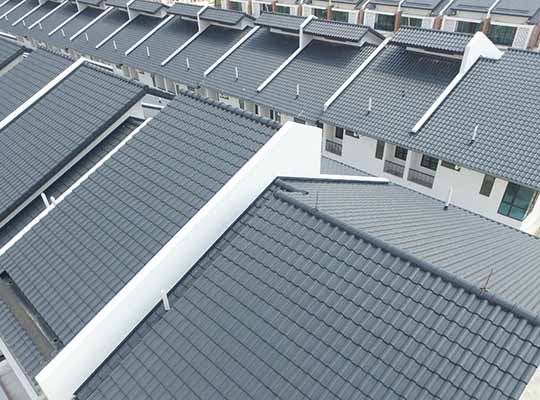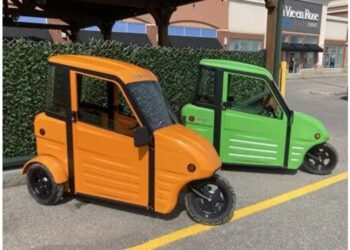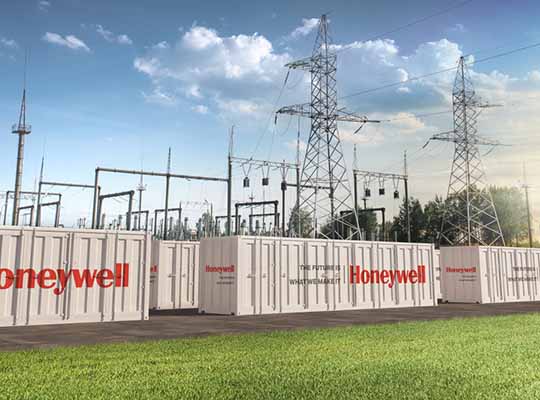ALBANY, N.Y. – Cool roof coatings are widely used in roof systems in various buildings to turn them into cool roofs. A number of IR reflective coatings and more recently, elastomeric coatings, has gained traction in cool roof products. Cool roof systems essentially counter urban heat islands, notably for lowering buildings’ energy consumption and energy cost. More importantly, the growing role of cool roof products in lowering the greenhouse gas emissions by significant percentage in urban settlements. A wide range of chemistries has been used by manufacturers to improve the performance of cool roofs. This has expanded growth avenues for chemical companies to expand their product portfolio and boost prospects, according to a market survey on cool roof coatings. Coatings for low-sloped roofs have gained popularity, and the segment is expected to attract massive opportunities in near future for cool roof coatings market players. The low cost of installation is one of the factors driving the adoption of low-sloped cool roof systems in developing countries.
The cool roof coatings market is expected to reach US$ 554.21 Mn by 2026, notes a study by Transparency Market Research.
Key Findings: Cool Roof Coatings Market
- Regulatory Push for Low-carbon Footprint Buildings Bolsters Demand: Globally, economies are becoming conscious about disruptive impact of climate change on the ecology. Emissions from buildings are increasingly gathering attention in this regard, propelling the popularity of cool roof systems. Major economies of the world have laid down regulations that demonstrate the energy savings such technologies can bring. A case in point is the U.S. Environmental Protection Agency demonstrating the role of cool roof systems for reducing the carbon footprint of commercial roofing spaces. This, in turn, has fueled the sales of cool roof coatings.
- Commercial Units Witness High Adoption: Of the various end users, industrial units have seen extensive adoption of cool roofs, finds a market survey on cool roof coatings. The demand for cool roof products has surged in commercial buildings, especially in a number of emerging economies. The major focus on reducing the cost of air conditioning is a key factor for commercialization of such roof systems. Thus, chemical companies have introduced cost-effective formulations to meet the demand. Moreover, facility managers are keen on adopting cool roof coatings that preserve and protect roof surfaces against premature deterioration.
Cool Roof Coatings Market: Drivers
- Increasing awareness about architectural technology that can reduce energy bills of buildings and bring comfort to occupants is a key driver. Over the years, the high use of air conditioning in commercial buildings has led to urban heat islands. This has raised environmental concerns.
- Resurfacing of conventional roofing materials for prolonging lifespan of roofs is another factor driving product demand
- Rapid pace of industrialization is a key trend expanding the cool roof coatings market
Cool Roof Coatings Market: Regional Growth Dynamics
- Of the various regions, Asia Pacific is viewed with potentially lucrative avenues. The focus on improving energy efficiency of existing buildings has led to retrofitting of many with cool roof coatings.
- Asia Pacific cool roof coatings market is also likely to expand due to the implementation of green energy codes, especially in residential buildings
- North America accounted for a major market share in 2017. The opportunities for market players has constantly increased due to rise in focus on reducing carbon footprints by developing buildings with rooftops coated with reflective coatings. The U.S. is a prominent market in the region.
Cool Roof Coatings Market: Key Competitive Dynamics
- Huntsman International LLC.
- BASF SE
- The Valspar Corporation
- Nutech Paint
- Akzo Nobel N.V.
- DowDuPont
Chemical & Materials Industry battles Tangible Impact of Economic and Cultural changes, Explore Transparency Market Research’s award-winning coverage of the global Chemicals & Materials Industry:
Polycarbonate Diols Market – The global polycarbonate diols market was valued over US$200 Mn in 2020and is expected to reach US$ 400Mn by 2031, expanding at a CAGR of 5% during the forecast period of 2021 to2031. Polycarbonate diols are resistant to oxidation, wear, and stains; they also provide resistance to hydrolysis in polyurethane products as compared to polyester polyols and polyether. Solid polycarbonate diols provide high strength, excellent mechanical properties, efficient performance, and high thermal stability when used at low temperature. The demand for polycarbonate is increasing across the globe primarily due to the rise in the demand for synthetic leather. Solid polycarbonates are also employed in various applications in diverse sectors such as waterborne paints & coatings in textiles, furniture, and automotive. The liquid form of polycarbonate diols is made from traditional polyols, which consist of a hydrophilic group. As a result, the water resistant property of the material is adversely affected. Polycarbonate is added to improve the hydrolysis resistance of polyurethane materials. Consequently, polycarbonate diols can be used effectively in the production of waterborne polyurethane materials.
Precipitated Barium Sulfate Market – The significant growth of paints & coatings and rubber industries is estimated to fuel the consumption of precipitated barium sulfate, especially in Germany. This, in turn, is anticipated to drive the precipitated barium sulfate market in Europe. Precipitated barium sulfate is employed as a filler agent in paints, coatings, rubber, and plastics, as it possesses beneficial properties such as chemical inertness, nontoxicity, and high specific gravity. Precipitated barium sulfate is used as a filler to create colorful plastics, as it is effective in improving the intensity, stiffness, and abrasive strength. This makes the plastic attractive in appearance and stronger in strength.













